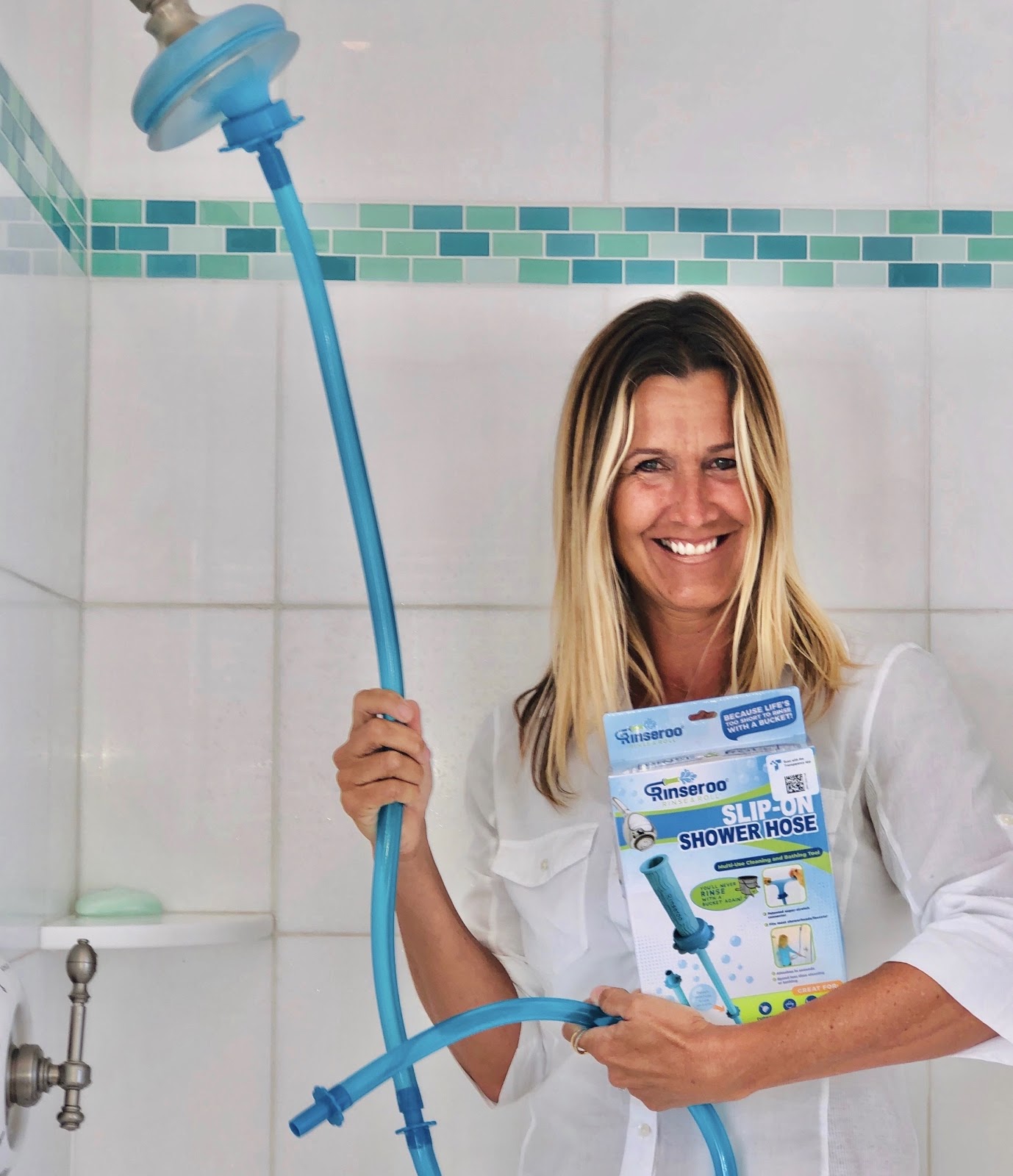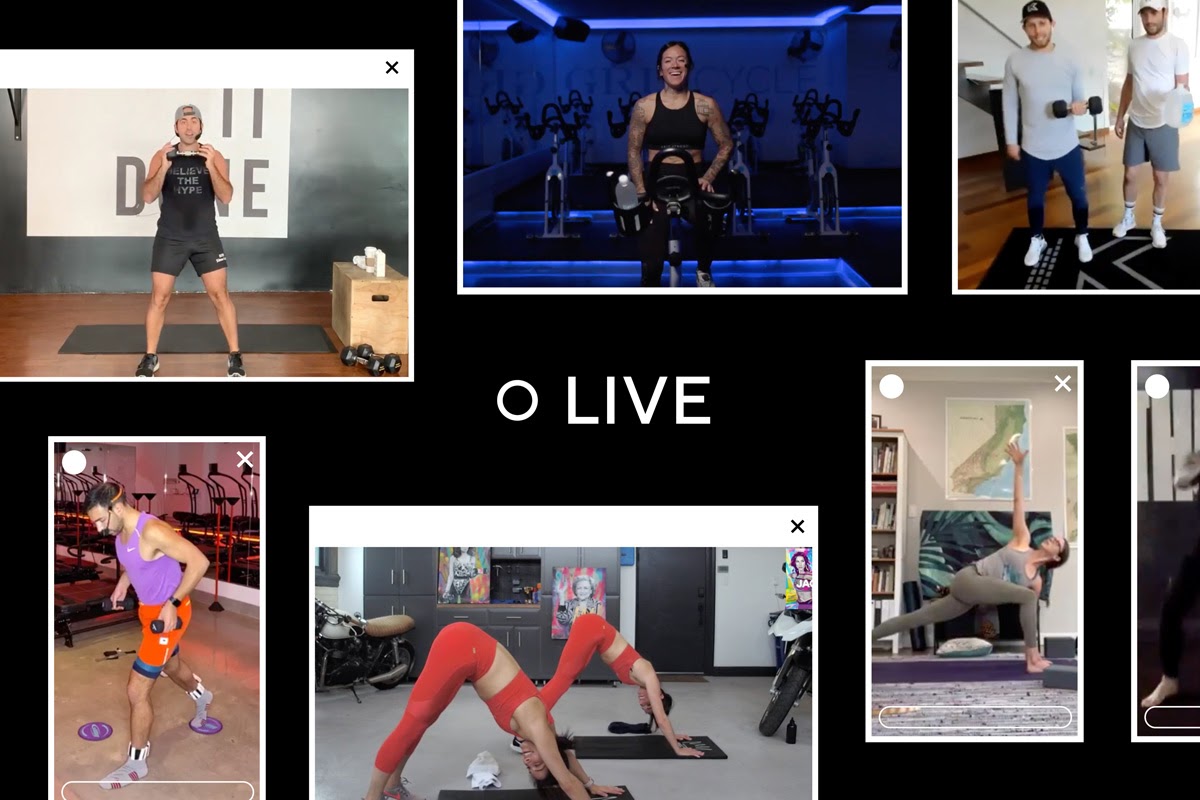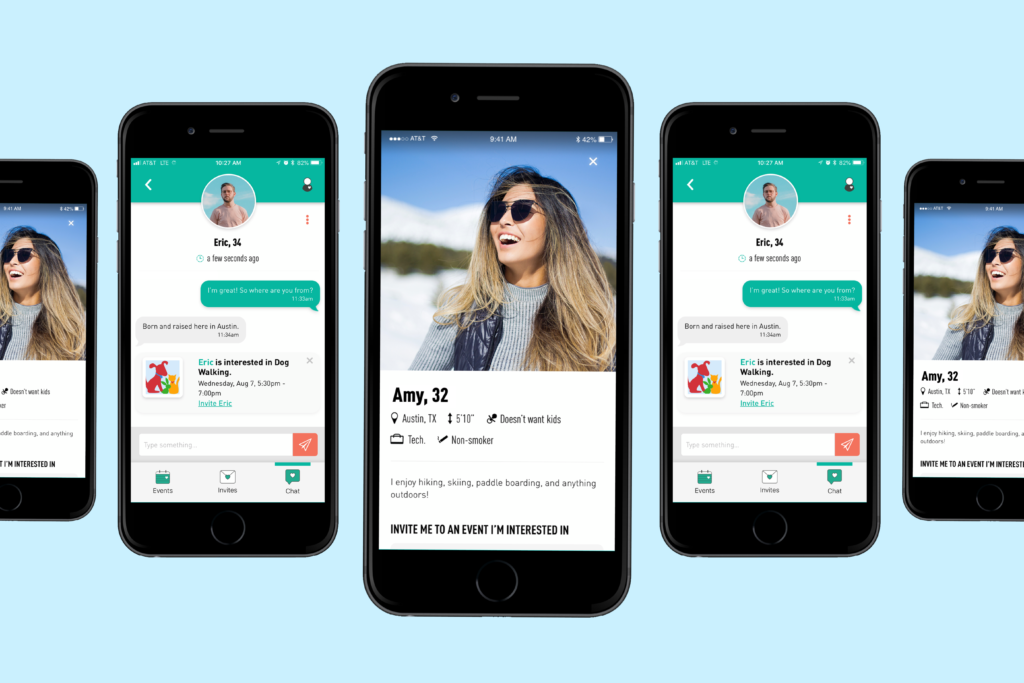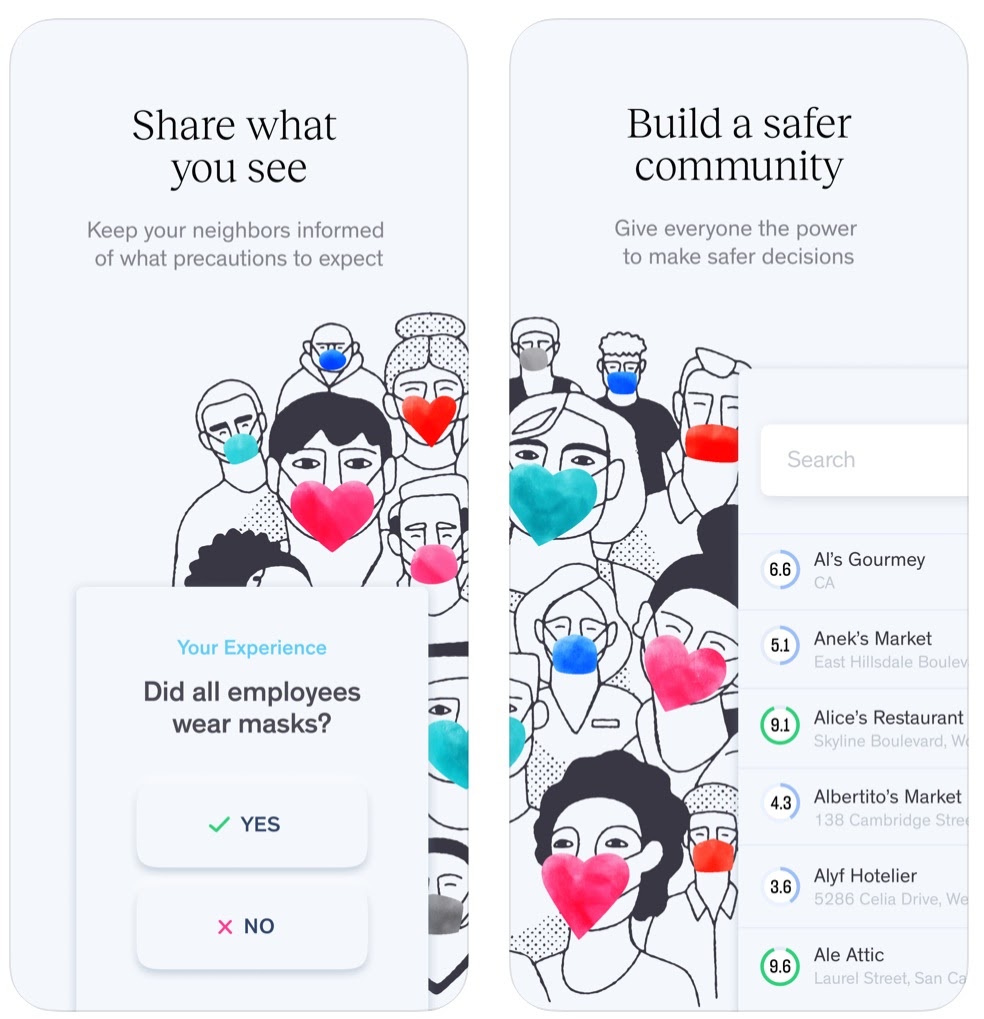From virtual team-building campfires to quantum leaps in AR technology, the coronavirus has motivated some enterprising business owners to think outside the box. And many entrepreneurs are not letting the pandemic or recession stop them, with 500,000 new employer identification number applications submitted since mid-March.
A depression or recession can paradoxically be a great time to start a business because there are new needs to be filled in both the public and private sectors. For example in 2009, while the nation was still recovering from the Great Recession, Venmo and Square were created to allow people to easily exchange funds digitally without hefty fees. These mobile payment systems provided workers with new freedom and mobility, laying the groundwork for the gig economy.
The graphs above compare Google Trends searches in early 2019 and 2020 for certain industry keywords, illustrating how sudden needs in the public create demands for certain products and services. There was a massive surge for the term “At-Home Fitness” during the dawning of the coronavirus crisis in the US this past March, with interest in the sector remaining healthy to the present. The keyword “Bidet” saw an even more striking rise, just as perceived toilet paper shortages rocked the nation. And the emerging technology of 3D modeling, which as we will see has important applications in the COVID-19 era, also saw steady, if modest, increases in searches this year.
While times of uncertainty can be difficult for long-established businesses, they can also be sources of opportunity and innovation for risk-friendly and flexible entrepreneurs. Some of the most well-known US brands of today have started during financial downturns, including Hewlett-Packard, IBM, General Electric, Uber, and Slack. As author and entrepreneur Seth Godin once wrote, “If you are deliberately trying to create a future that feels safe, you will willfully ignore the future that is likely.”
As illustrated in the chart above, the innovations these new businesses spearhead can long outlast the financial crises that originally sparked them, jump-starting technological and societal advances. The Dot-Com Bust of 2001 saw the birth of the Apple Store and Mailchimp, two businesses that rendered technology user-friendly and empowered the small businessperson. The year after, as the nation was still recovering from both the impacts of that economic downturn and 9/11, SpaceX was launched. And almost a decade later, the Great Recession birthed not only the aforementioned Venmo and Square, but the groundbreaking Uber as well.
Will the 10 businesses on our list have the potential to do the same in the COVID-19 era?
1. UrsaLeo
UrsaLeo allows users to visualize operational data within 3D photorealistic “digital twins” of physical workspaces. Via sensors placed along the brick and mortar facility, UrsaLeo’s software can also be used to remotely access various functions and even interact with workers on-site. The result looks very much like a video game, except it is actually a searchable “duplicate” of an office or factory.
(Credit: UrsaLeo)
Digital twins connect physical space and cyberspace by combining several cutting edge technologies including machine learning, spatial network graphs, AI, and the Internet of Things. The uses for such software like UrsaLeo’s span from the obvious needs of remote workers during the current pandemic to broader applications in manufacturing, utilities management, and healthcare. And in an era of Space Force and SpaceX, such technology could be put to use on unmanned exploratory vehicles and even moon bases.
2. Rinseroo
One of the most emblematic aspects of the coronavirus pandemic was the initial shortage of toilet paper and subsequent consumer panic. An alternative to toilet paper used widely in Europe and other countries is the bidet, a handy basin-type device that never quite took off in the US. Enter the Rinseroo slip-on shower and sink hose attachment, which can be used, among other things, as an instant bidet in a pinch.

(SOURCE: Rinseroo)
The Rinseroo, the brainchild of New Jersey inventor Lisa Lane, is currently being advertised as the “Perfect Pandemic Problem Solver” but can be utilized for a whole host of different purposes. Its super-stretch connector slips over a faucet or shower head and immediately becomes a super-flexible rinsing tool, as well as an instant bidet. Considering that toilet paper has become an environmental as well as interrupted supply chain concern, perhaps this product has the potential to introduce Americans to the concept of bidets after all.
3. ThirdEye X2 MR Glasses
ThirdEye uses specialized mixed reality (MR) and augmented reality (AR) technology to allow users to assess surroundings and receive digital data directly in one’s field of view. Its X2 glasses can also generate heat maps using its thermal scanner, making it ideal to immediately detect elevated temperatures associated with various illnesses such as the coronavirus.
(SOURCE: ThirdEye)
MR blends physical and virtual worlds through immersive technology, simulating a real or imagined environment and complete with accompanying sensory information. Mixed reality hardware such as ThirdEye’s glasses can do many things such as stream real-time footage and digital information like medical records to physicians, allow remote workers to collaborate in a shared digital space, and train military personnel. The tech simply is, as Forbes put it, “the Future of Humanity.”
4. Tiny Campfire
About 16 million US workers started working remotely due to the pandemic by the end of March, and it is likely many will continue to do so even after the crisis has passed. In the quest to maintain remote team-building across national and international boundaries, Tiny Campfire has come up with a quirky virtual solution to rouse that corporate team spirit.
The company provides businesses such as Apple, Pepsi, and Netflix with structured “virtual campfire” events. Tiny Campfire creates and hosts an itinerary of activities like trivia games, ghost stories, and competitions for the whole team via video conferencing. There is even a “real world” component to the service, with gift bags and even s’mores kits sent to the employees beforehand. Perhaps it is this blending of the physical and virtual worlds, as seen with some of the others on this list, that is the key to the popular businesses of the future.
5. Promobot
The Jetsons-type fun future we have all been promised includes cute helper-robots. While the coronavirus is currently making that future seem more like a dystopia, the makers of Promobot have at least provided the robot. Promobot is currently making the publicity rounds as a COVID-19 information dissemination tool but is advertised to have applications as diverse as building manager, tour guide, and of course entertainment center.

(SOURCE: Promobot)
Promobot is an easy-to-operate machine that communicates through AI. It moves independently while avoiding collisions through a combination of sound waves and refracted light, and can even automatically bring itself to its charging station when its battery charge is low. The robot, referred to as an “employee” on the website, is shipped with à la carte options including bar code scanner, payment terminal, photo printer, and plastic card dispenser. Perhaps the future of purchasing androids will be as simple as ordering an iPhone.
6. Virtual Personal Trainers
The $94 billion fitness industry has taken a massive hit as the result of pandemic lockdowns. However, like a number of other sectors, gyms and personal trainers are reinventing themselves for the “new normal” of a COVID-19 world. The key to their recovery is the use of streaming video to present both live and recorded workouts to a homebound public.

(SOURCE: ClassPass)
The ClassPass app offers access to a plethora of livestream workout classes from studios all over the nation, in disciplines as diverse as boxing, yoga, dance, and cycling. There is also over 4,000 pre-recorded workouts. Workout Depot delivers fitness regimens from a marketplace of different personal trainers, tailored for individual athletes. These remote gym alternatives deliver convenient on-demand workouts for people when they want, where they want, as well as keeping local studios and personal trainers in business.
7. Swoovy
The Swoovy dating app offers users “dates with impact,” connecting people through identifying shared social causes. Participants choose volunteering activities they have interest in, and are matched up with potential partners accordingly. Swoovy also connects both singles and couples to a number of opportunities to give back to the community that they can accomplish from the comfort of their own homes, such as creating care kits and becoming “virtual buddies” for seniors.

(SOURCE: Swoovy)
Much like Tiny Campfire, the key with Swoovy is using online technology to connect people and provide them with the structure they need to build and reinforce friendships. Considering that loneliness was an issue for nearly half of all Americans even before the coronavirus, and political compatibility an increasing factor in dating choices, this app seems to be accessing the zeitgeist. Bars and nightclubs may have been the destinations of choice to meet significant others in the past, but perhaps the future is socially conscious and as close as one’s phone.
8. Pre-Screening Safety Apps
COVID-19 has inspired a number of applications that allows customers to “pre-screen” establishments for proper safety precautions. For example, Zero (not to be confused with the fasting app) claims to be a “Yelp” for coronavirus prevention, allowing users to leave and read reviews of how well establishments are following social distancing rules. There are also virus pre-screening apps for employers like the one KCI offers that provide not only health quizzes for workers but contact tracing and geospatial tagging.

(SOURCE: Zero)
It is not hard to imagine both types of apps to have alternative uses far beyond health, as they blend aspects of social media (such as ratings and GPS tagging) with business concerns. For example, the logic behind Zero could be used as a “Yelp” for reviewing how well businesses big and small deal with social issues. Employer apps that use thorough pre-screening software could in theory expand its criteria to track other aspects of workers they might be concerned with, such as social media use itself. Such developments in technology will no doubt open a Pandora’s Box of privacy issues.
9. EarthSafe
The coronavirus has created a boom in professional cleaning services, but at what environmental cost? According to the Environmental Protection Agency, cleaning products that are released into the air or rinsed into the water supply can cause damage to the planet a well as a number of health problems. The EPA also points out that 6% out of the cleaning industry’s 2.8 million janitors will suffer a job-related injury from exposure to these toxic chemicals. Enter EarthSafe Chemical Alternatives, a company offering Earth-friendly deep-cleaning alternatives for businesses and facilities.
According to its website, EarthSafe is the first “to deliver viable chemical alternatives that are safe, nontoxic and biodegradable,” and offers their services to construction sites, cruise ships, industrial facilities, and public housing. It provides cleaning substitutes for toxic chemicals such as hydrochloride, and claims that such environmentally friendly solutions do not cut back on performance. With companies increasingly being held accountable for the ill effects of the chemicals they use, EarthSafe will probably improve not just the health of employees but the financial bottom line.
10. Drive-Ins
While economic crisis can inspire the creation of innovative new products, some older ones can also make a comeback. There were over 4,000 drive-in movie theatres in the US at the height of their popularity in 1958. As of 2019, those numbers have dropped to a little over 300. With the rise of COVID-19 and social distancing, however, viewing a movie from the relative safety of one’s car has taken on significantly more appeal. Consequently, drive-ins are currently experiencing a revival, which can only be a boon for a movie industry cratered by the pandemic.
The concept has even been uniquely extended to other public events such as live concerts. Will drive-ins, like other businesses on this list, continue to remain popular after the current pandemic is over? Considering that the journal Science has hypothesized that some degree of social distancing might have to be extended into 2022 in order to keep the virus at bay, perhaps they have some time.
The Bottom Line
These are unprecedented times for our nation, and the loss and grief are all too real. At the same time, this global misfortune is also propelling us—perhaps a bit ahead of schedule—into the future in terms of technological and societal change. Those entrepreneurs who think outside of the box today could be business moguls in the years to come.
Methodology
We ranked the items on this list using data and expert opinions from the fields of retail, business, statistics, and technology. These sources include the Bureau Of Labor Statistics, MarketWatch, The New York Times, and Scientific American.